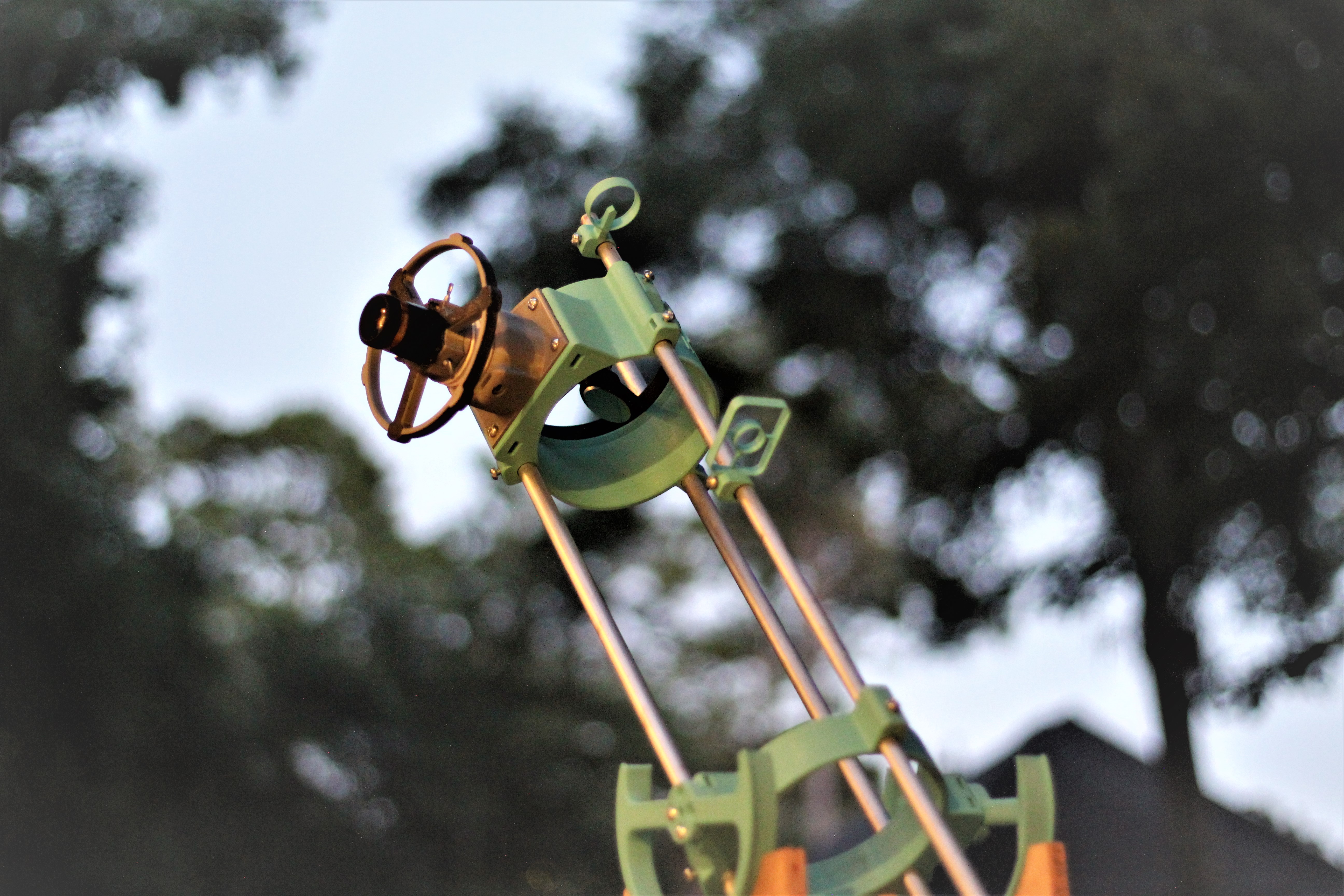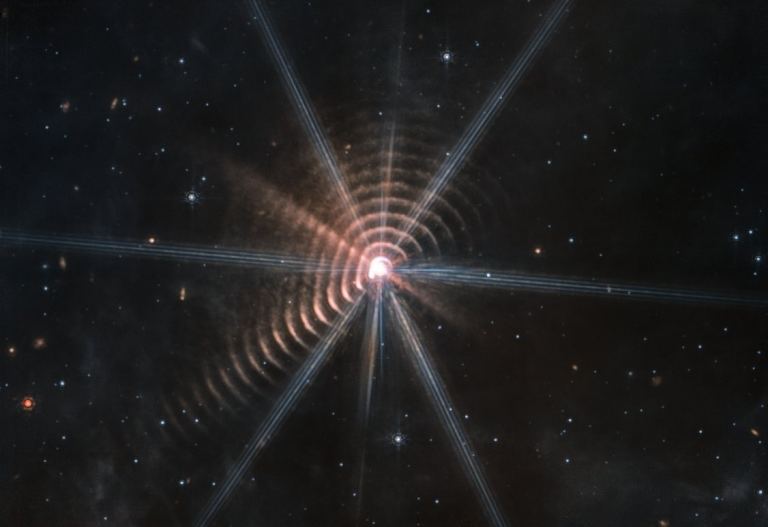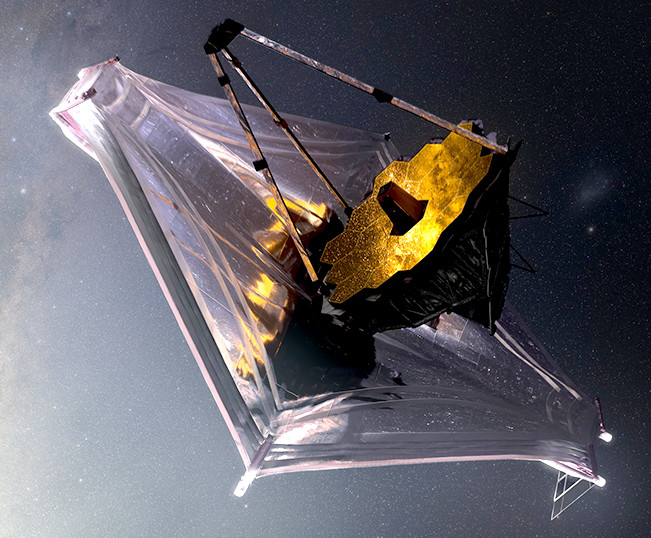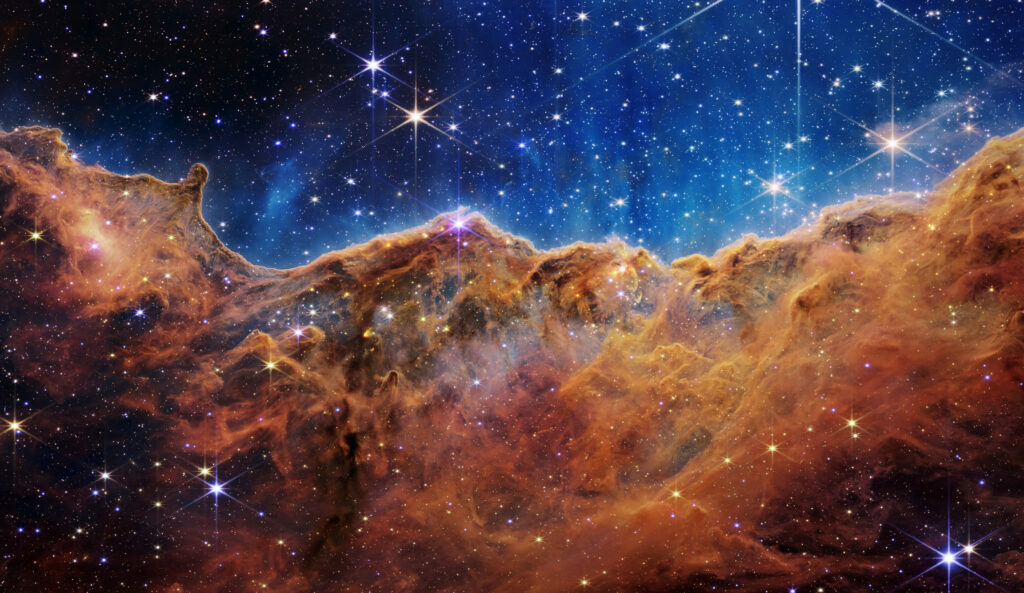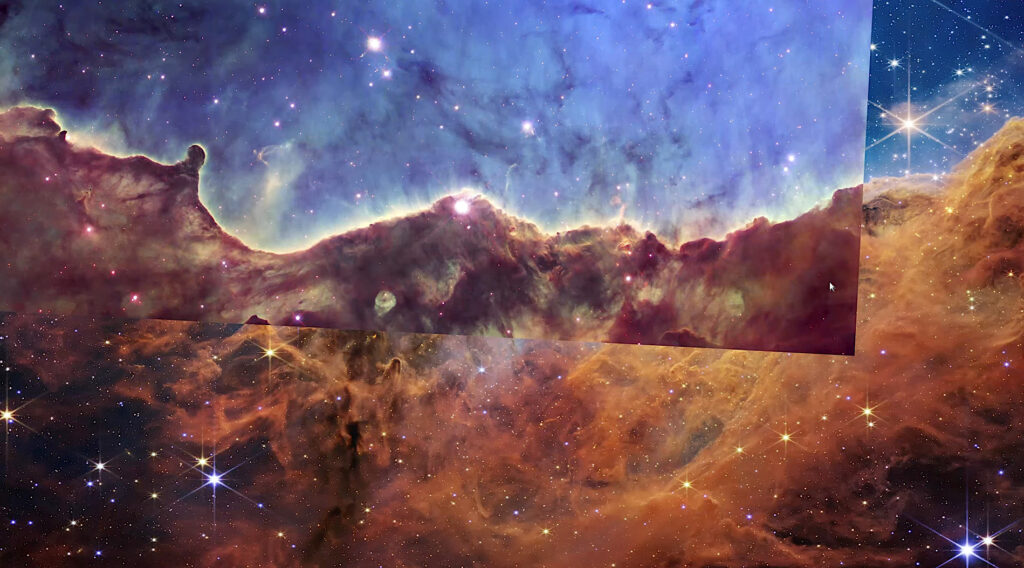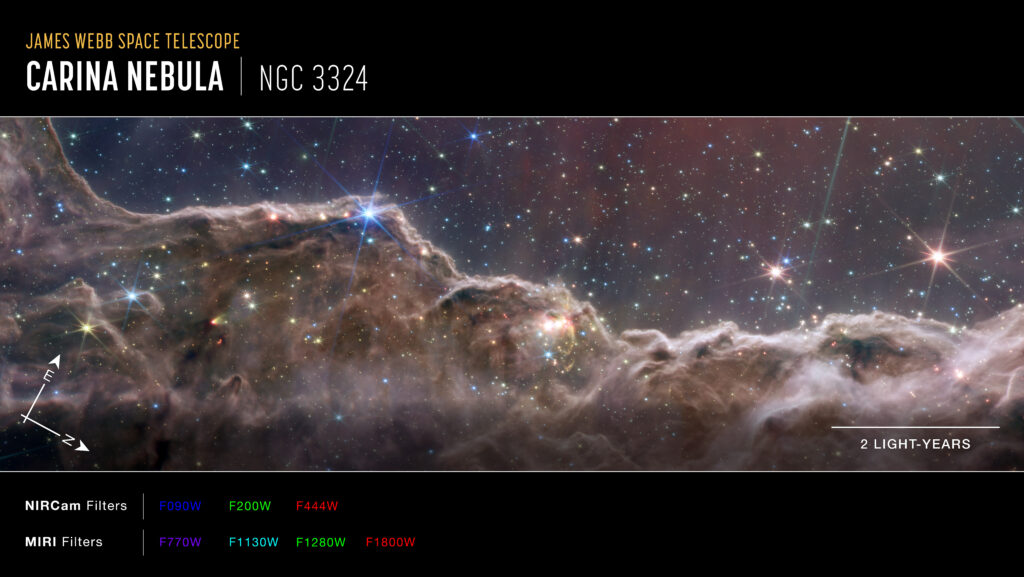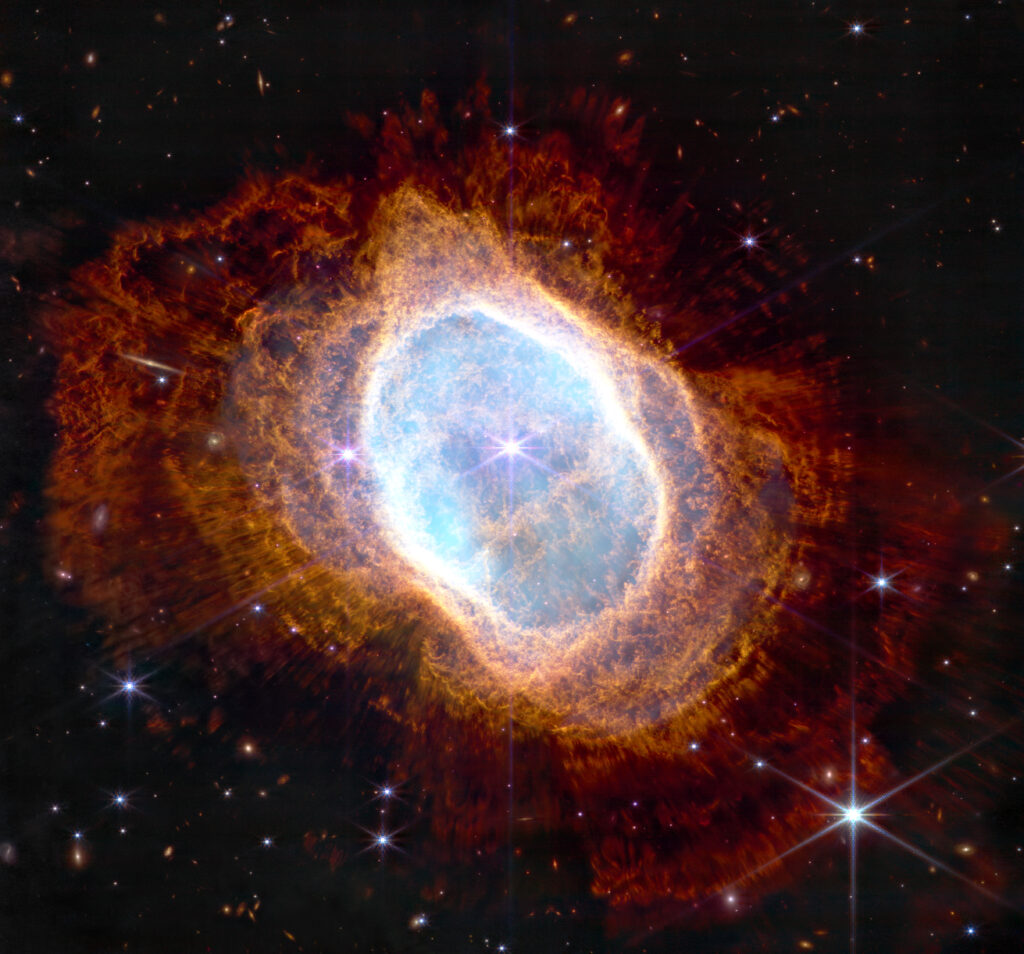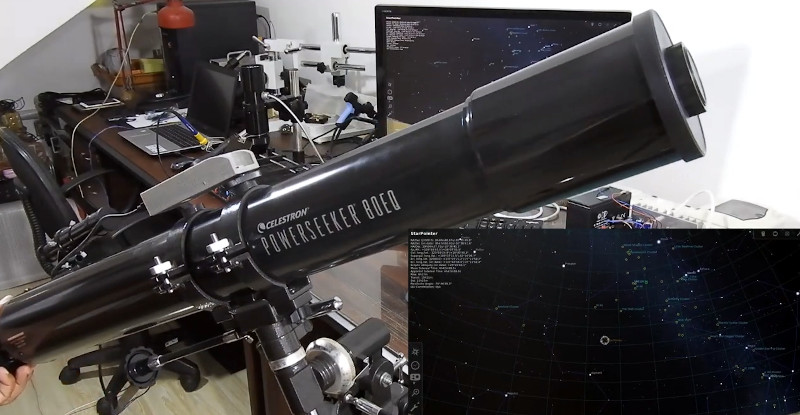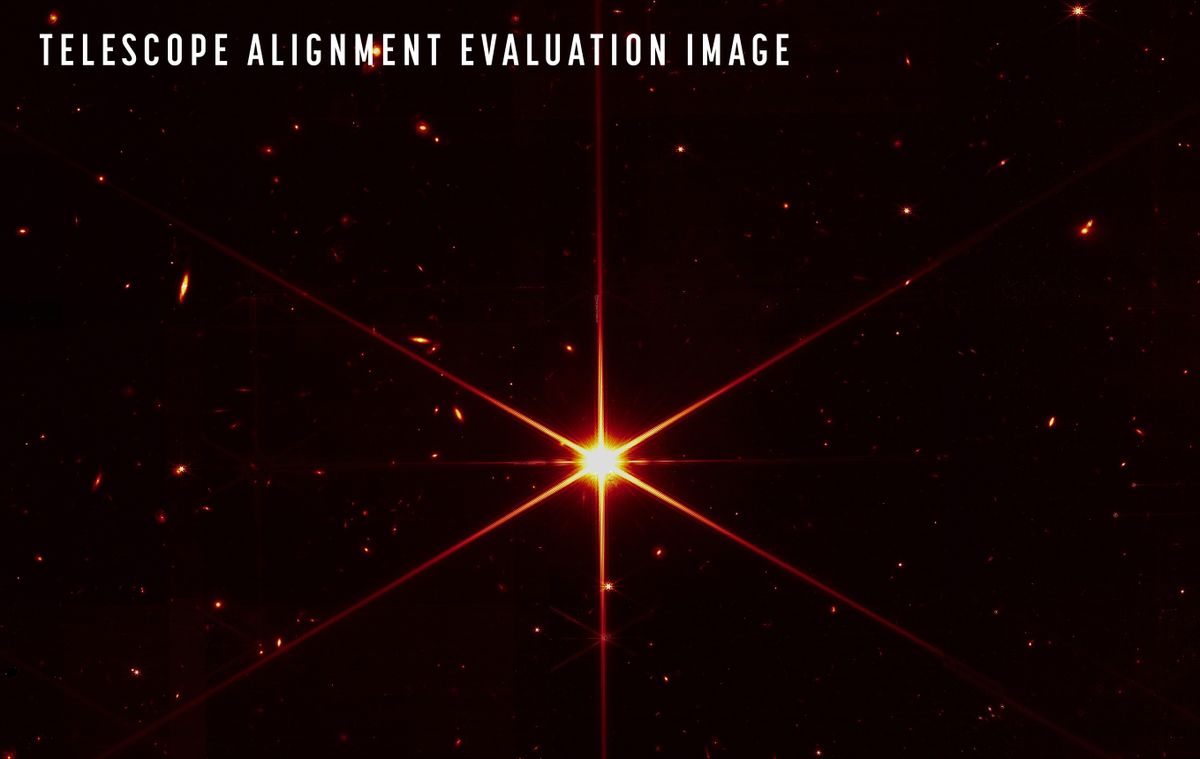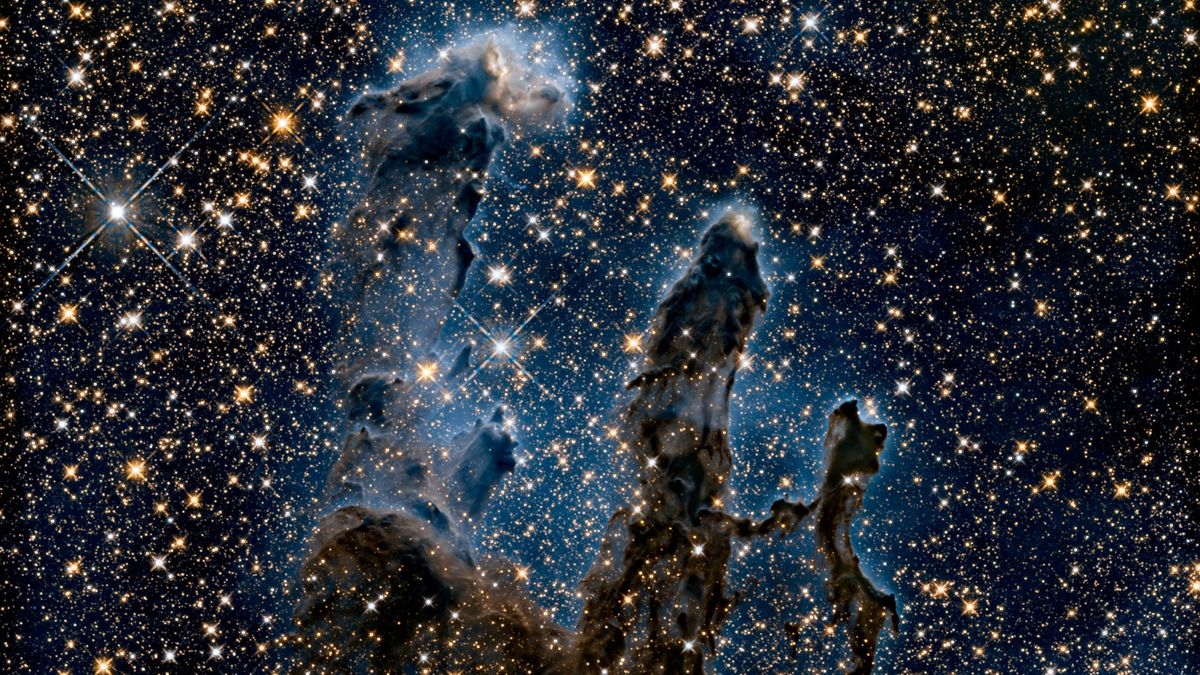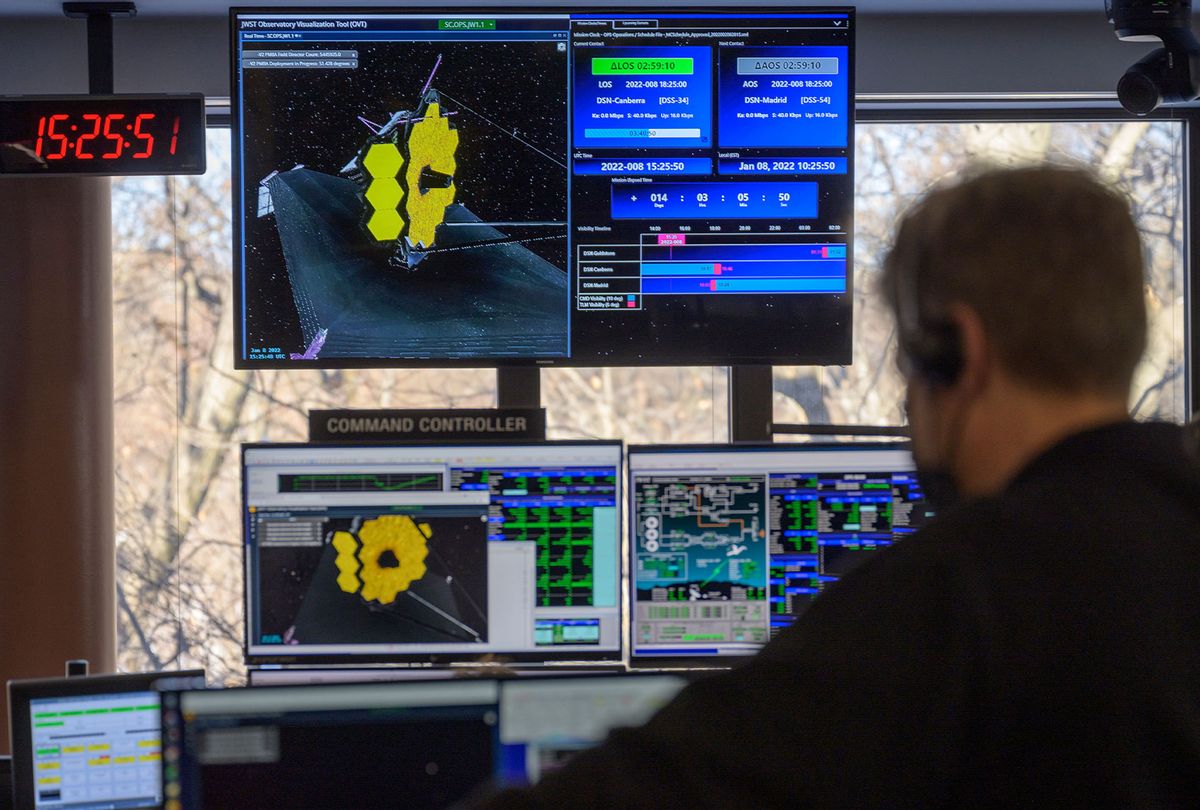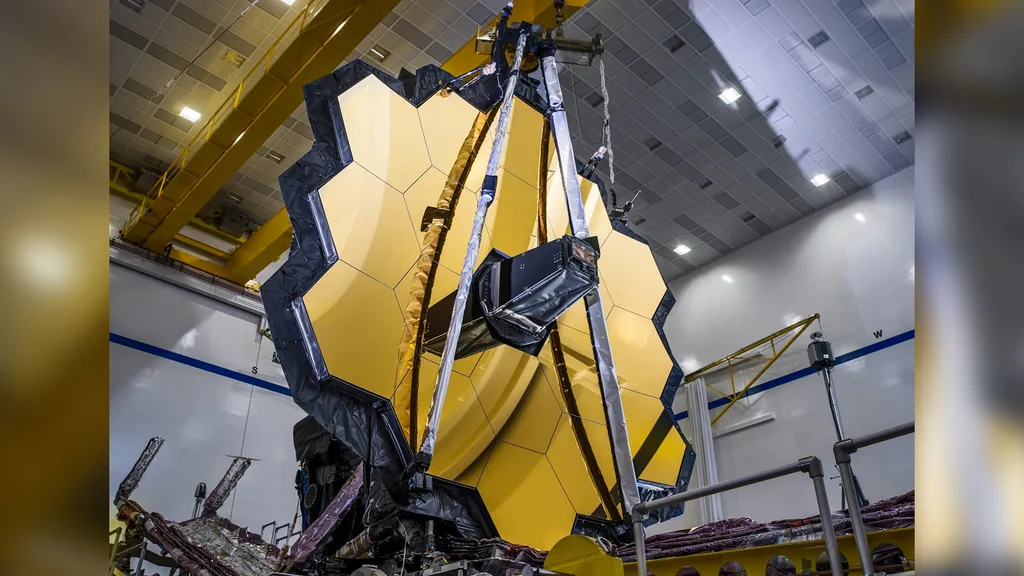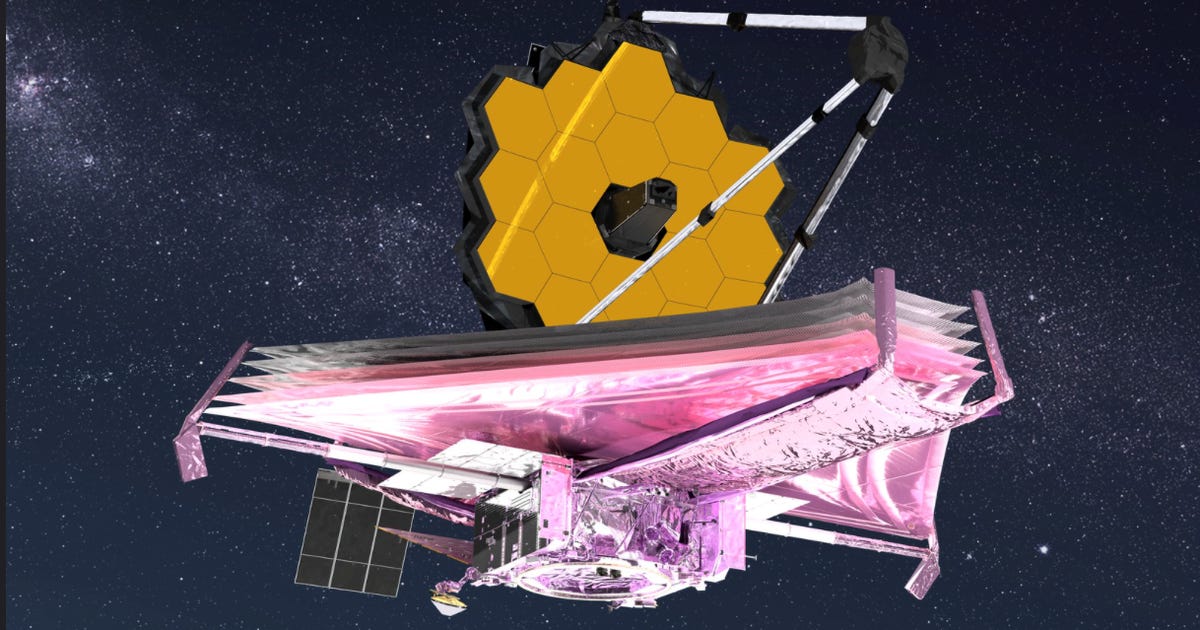How the James Webb Space Telescope's infrared detectors will open new vistas in astronomy | Space
https://www.space.com/james-webb-space-telescoe-infrared-light-astronomy-vistas-video
How the James Webb Space Telescope's infrared detectors will open new vistas in astronomy
By Elizabeth Howell published about 15 hours ago
The telescope 'time machine' will deliver 13.5 billion years of cosmic history.

The Eagle Nebula’s Pillars of Creation imaged by the Hubble Space Telescope, in infrared.
(Image credit: NASA, ESA/Hubble and the Hubble Heritage Team)
The newest deep space observatory, the James Webb Space Telescope, will give us a deeper view into the infrared universe than the iconic Hubble.
A new video from the European Space Agency (ESA) showcases how Webb will open new vistas into astronomical objects across the universe, ranging from galaxies formed billions of years ago to clouds of gas and dust surrounding newborn stars.
Infrared light is the heat-carrying part of the electromagnetic spectrum with longer wavelengths than visible light. The Hubble Space Telescope is optimized for visible light but can also detect some ultraviolet (shorter wavelengths than visible) and some infrared. Webb, however, was developed as an infrared specialist and can take on a much larger span of infrared wavelengths. That, for example, means seeing even deeper into the universe than Hubble does.
Since the universe is expanding, the galaxies farther away from us are moving away at greater speeds than the closer ones. The light these galaxies emit is shifted into longer, redder, wavelengths, as a result of the Doppler effect (the same effect that distorts the sound of a passing ambulance), also known as redshift in astronomy.
With better views of the early universe, NASA said in a separate release last year about Webb's infrared capabilities, astronomers hope to gain more insight about how galaxies formed and evolved.
As infrared light is less subject to interference from dust, Webb will also enable astronomers to see what's going on inside of dust clouds in the nearer universe. "We can penetrate the dust and see the processes leading to star and planet formation," ESA said in a statement.
This means that, for example, Hubble's 2020 view of the iconic Eagle Nebula "Pillars of Creation" in infrared could look different with Webb's infrared gaze. The Pillars are a famous zone of star formation, for which Webb may provide more insight.
"Star formation in the local universe takes place in the centers of dense, dusty clouds, obscured from our eyes at normal visible wavelengths," ESA said in the statement.
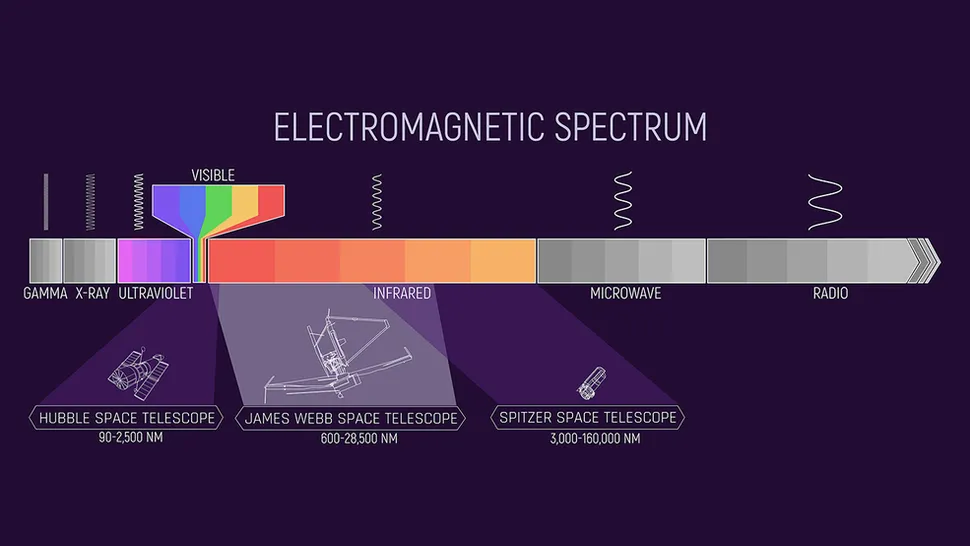
A comparison of different observatories and which light wavelengths they can best see.
(Image credit: NASA and J. Olmstead (STScI))
Peering into objects in the nearer universe will provide additional answers that will further help astronomers build up their understanding of the universe's evolution.
"We really need to understand the local universe in order to understand all of the universe,” Martha Boyer, deputy branch manager of Webb's near-infrared camera (NIRCam), one of the two cameras on board of Webb that will perform the infrared observations, said in the NASA release.
Speaking of the galaxies closest to our own, the Milky Way, Boyer said the so-called 'Local Group' will be a mini-laboratory allowing astronomers to look at galaxies in high definition.
The Local Group consists of three main galaxies, the Milky Way included, which are all located within 5 million light-years from Earth, according to EarthSky. The largest of these galaxies is Andromeda, the Milky Way is the middle one, and a galaxy known as Triangulum is the smallest of the three. The group also includes about 50 dwarf galaxies that mostly orbit the large ones.
Further-away galaxies, Boyer added, "can’t resolve much detail, so we don’t know exactly what’s going on. A major step towards understanding distant or early galaxies is to study this collection of galaxies that are within our reach."
Follow Elizabeth Howell on Twitter @howellspace. Follow us on Twitter @Spacedotcom and on Facebook.

